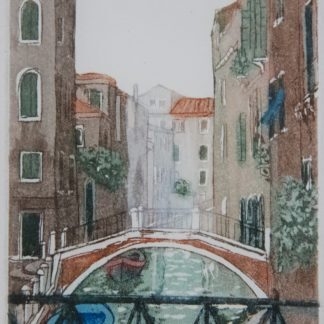Bio & Information
Bio George Ward Tjungarrayi (Australian Aboriginal 1945-)
George Ward Describes himself as a “Bush Man” he started painting at Papunya around late seventies – early eighties It was not until his older brother Yala Yala Gibbs died in 1998, that the full weight of cultural and ceremonial authority was transferred to George Ward – Yala Yala Gibbs was a foundation artist in the Papunya Tula Aboriginal art movement The art work of George Ward Tjungurrayi reflected these changes of authority, his paintings becoming more sophisticated and his style more distinctive The dense lines that created his structures were surrounded by rows of dots that gave the paintings great power
Judith Ryan, curator at the National Gallery of Victoria summed up the effects on George Ward’s painting “He hit on this sophisticated, geometric, filled-in style almost at once I have the sense that he began to paint only when he was ready, in full command of both story and country” In George Ward’s larger paintings, he regularly creates the Tingari or Dreaming stories from his ancestral country located to the west of Kintore and adjacent to Lake MacDonald These stories relate the epic travels of the Creation Ancestors who brought the land and all its life forms into being as they passed across the country George Ward Tjungurrayi was in his early teenage years and close to his land before his family first made contact with the European white settlers, sometime later joined the settlement of Papunya on the edge of the desert country he met and married his wife, the somewhat formidable Nangawarra Ward Napurrula (the daughter of Charlie Ward Tjakamarra), a member of one of the desert’s most dominant families
Anita Angel, art curator at Charles Darwin University, says of George Ward’s artwork, “It’s instantly recognizable, he has a style, but it’s more than just a style He’s coming from somewhere deep within his mind’s eye to draw out what he does He’s not experimenting, he knows exactly what he’s doing”
NGV curator Judith Ryan comments further on George Ward’s painting- “It’s refined and refined over many layers, and that gives it a reverberative shimmer, a final precision of detail Art of this kind has immense potency It’s not difficult at all for today’s collectors to have a passion for it, because it’s minimal It’s towards the minimal edge in terms of design, and in its lack of figuration and restricted palette” In 2004 George Ward Tjungurrayi was the winner of the Wynne Prize for a topographical depiction of the Western Desert landscape at the Art Gallery of NSW
George Ward Tjungurrayi is a highly regarded and sought after by collectors and is represented in major national collections including the National Gallery of Victoria, Art Gallery of NSW, Supreme Court of Northern Territory, and in Musée des Arts d’Afrique et d’Océanie, Paris, and Groninger Museum, Netherlands
Selected Exhibitions
1990 Araluen Arts Centre, Alice Springs NT
1993 Chapman Gallery, Canberra ACT
1995 Araluen Arts Centre, Alice Springs NT
1995 Groninger Museum, Groninger , Netherlands
1996 Gallery Gabrielle Pizzi, Melbourne VIC
1998 Araluen Arts Centre, Alice Springs NT
1999 Araluen Arts Centre, Alice Springs NT
1997 Utopia Art, Sydney NSW
1997 Dreampower travelling exhibition, Gallerie Australis
2000 Papunya Tula: Genesis and Genius , Art Gallery of NSW, Sydney NSW
2002 Meridian, Museum of Contemporary Art, Sydney NSW
2006 Luminaries of the Desert, Japingka Gallery, Fremantle WA
2012 Heirs and Successors, Japingka Gallery, Fremantle WA
2013 Landmarks and Law Grounds: Men of the Desert, Japingka Gallery, Fremantle WA
2015 Sixteen Artists – 16 x 2, Japingka Gallery, Fremantle WA















